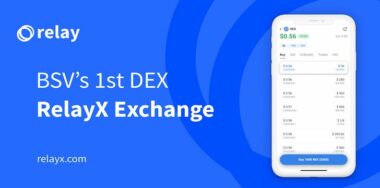Hodlocker.com continues to gain traction, with over 5,000 BSV coins locked against content on the platform since its launch in August 2023. However, that number flatlined in October, reaching a high of 5,600 coins, down to 5,150 as of writing. An idea that has been discussed by Hodlocker co-founder Jack Liu is the ability to lock coins against on-chain NFT listings.
With this feature, any user could curate these orders, informing the market which products they believe are of quality. Comparing this to traditional review platforms, which are susceptible to fake information, bots, Sybil attacks, and paid reviews, the simple action of locking coins as a curation mechanism is far superior. Only 21 million bitcoins exist, making the act of locking sybil-proof. If one locks coins against an order, they cannot lock those same coins against another order until the time elapses. Compared to the cheap like on Twitter (now X) or Facebook (NASDAQ: META) or upvote on Reddit, users are free to like and upvote as much as they would like.
For platforms such as RelayX, Relay Club, Aym, or 1SatOrdinals.com that show NFT listings, there is no mechanism to organize other than listing price, time listed, or type of product. For a user to be informed, they must conduct the majority of their research off-chain about the product being sold to purchase an on-chain asset.
As a Bitcoiner, this is absurd.
Instead of interpreting metadata such as description of the listing, author, and sales history, we can simply view how many coins are locked against the listing. If Bitcoiners inform us the product is of quality and is appropriately priced with their hard-earned coins that they could not spend elsewhere, this is the most valuable signal. While this act does not inform buyers that the product is actually good, it demonstrates that other Bitcoiners truly do.
Readers may ask, what is the incentive for others to spend their coins in the future? What do the curating lockers get in return? Platforms can share fee revenue with the top lockers. For example, if I lock 1 BSV against a listing of a Rexxie for 0.5 BSV, where RelayX takes a platform fee of 3%, RelayX would split ½ of the 3% with the lockers. As the sole locker, I would earn 1.5% of 0.5 BSV (0.0075 BSV). If multiple users lock against a post, the fee would be split proportionally with those who locked based on the amount, but there is a twist. Jack Liu has proposed that 80% of the 1.5% be split with the first 20% of lockers to incentivize early locking so that those with lots of coins cannot just follow on to listings with locks. This incentivizes curators to discover new, unique listings.
Lockers would have to be very careful about how long and how much they lock as if they lock against products that do not get purchased, they may not be able to curate other orders and are unable to earn. Lockers can take the risk of reducing the time lock to 6 blocks (approximately one hour) but take on the risk of the lock expiring before the purchase is completed. Conversely, if they lock for too long, ensuring they get the most revenue in the case of a sale, they cannot lock against other orders.
The ability to earn and curate on-chain commerce coupled with the decision point of how long to lock for and how much to lock and its second-order consequences are what make this model near perfect from an economic perspective.
Watch: Locking coins and HODLocker with Joshua Henslee
New to blockchain? Check out CoinGeek’s Blockchain for Beginners section, the ultimate resource guide to learn more about blockchain technology.










